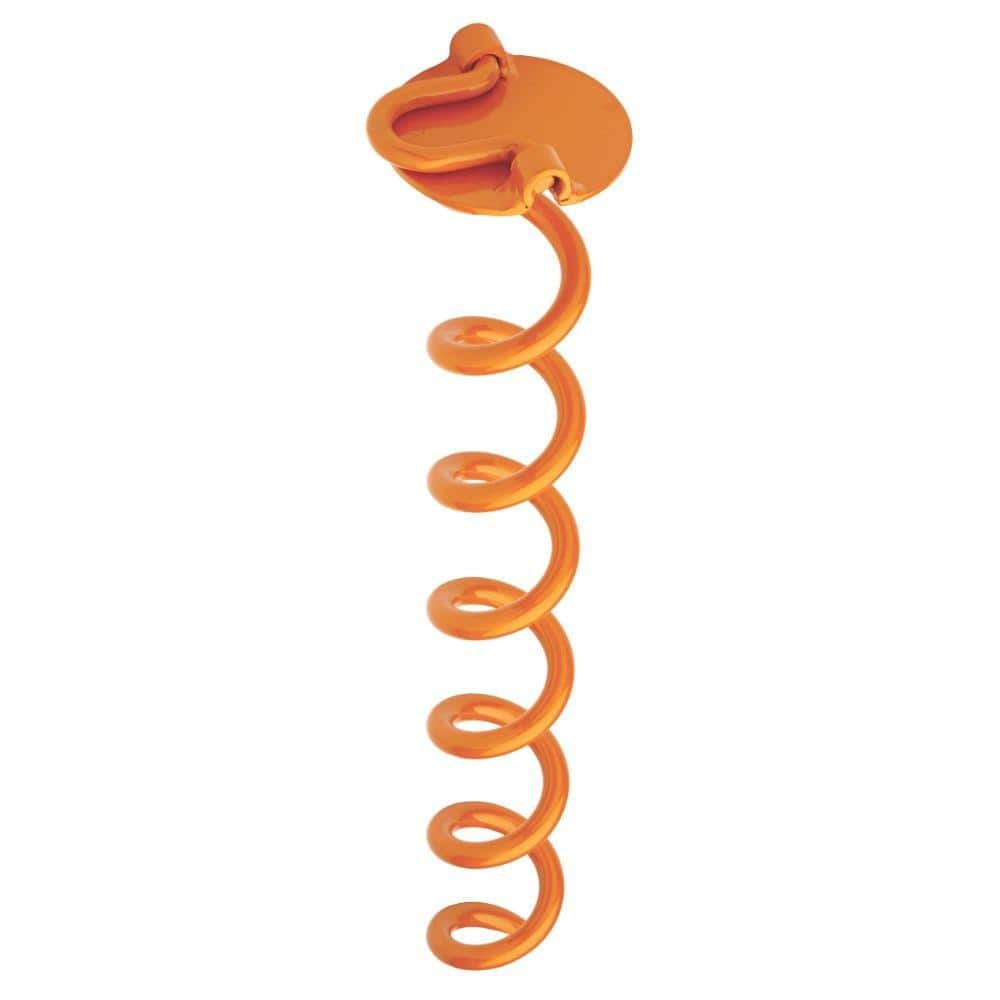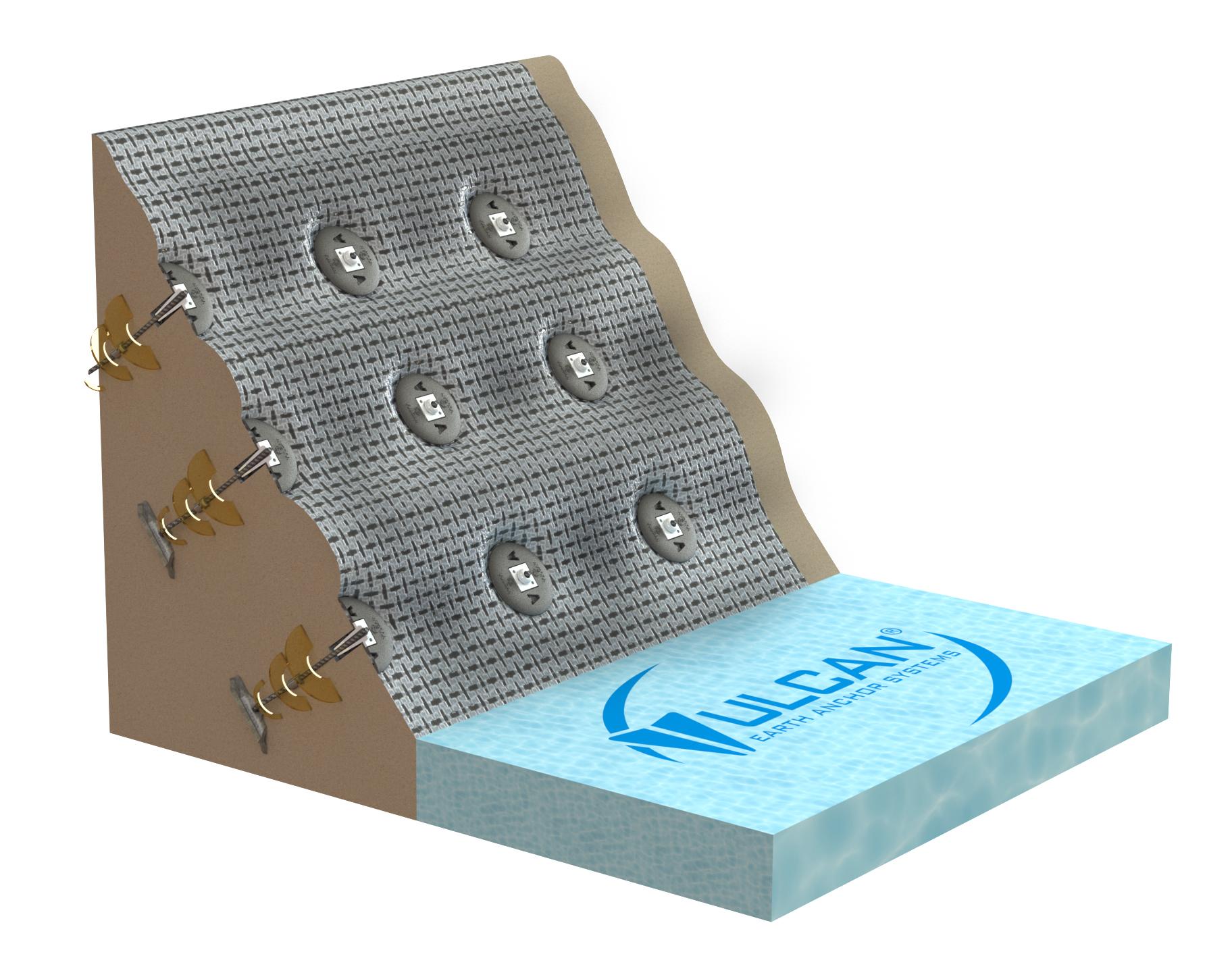Top 5 tensile load anchors That Outperform Traditional Anchors
Wiki Article
Just How Durable Earth Anchors Job: A Comprehensive Guide to Dirt Anchoring Solutions
Durable Earth anchors play a crucial role in giving security and assistance in various building and construction applications. By installing deeply right into the ground, they stand up to vertical and side pressures properly. Different kinds of anchors provide to different dirt conditions, making them functional. Comprehending their auto mechanics and installment methods is necessary for maximizing efficiency. What variables influence their effectiveness, and exactly how do they contrast to typical approaches? The responses may stun you.Understanding Heavy-Duty Earth Anchors
Sturdy Earth supports function as vital elements in various building and landscape design projects, giving security and support in tough soil conditions. These anchors function by being installed right into the ground, where they withstand vertical and side forces. Their layout enables safe accessory to frameworks, ensuring they stay anchored versus soil activity or outside loads.The effectiveness of sturdy Earth supports largely relies on the kind of dirt and the anchor's setup depth. Proper setup strategies are important, as they determine the support's holding ability. Environmental factors, such as wetness and freeze-thaw cycles, can likewise impact performance.These supports are frequently utilized in applications ranging from securing fencings and retaining wall surfaces to stabilizing temporary frameworks during damaging weather conditions. Comprehending the concepts behind sturdy Earth supports is essential for specialists seeking to boost the sturdiness and safety of their projects.Types of Heavy-Duty Earth Anchors
Different sorts of sturdy Earth anchors are made to fulfill particular requirements based on soil problems and job demands. Helical supports, including screw-like blades, are effective in softer soils, supplying high tons abilities and very easy installment. Driven supports, which are hammered right into the ground, appropriate for rocky surfaces and give immediate lots assistance. Tie-back supports are generally made use of in keeping wall surface applications, permitting for lateral assistance by securing into the ground at an angle. One more kind is the cast-in-place anchor, perfect for concrete applications, as they are integrated right into structures for improved stability. Finally, soil screw anchors are versatile choices that can be used in various dirt kinds, giving trusted stress and compression capacities. Each type serves distinctive applications, guaranteeing security and safety in building and construction and landscape design tasks. Recognizing these options permits informed choices in selecting the appropriate Earth securing remedy.The Mechanics of Dirt Anchoring

Recognizing the technicians of dirt anchoring requires an assessment of different sorts of Earth supports and their installment methods. Each anchor type provides special features that affect its effectiveness in various dirt conditions. Proper setup approaches are vital for making best use of the anchoring system's security and efficiency.
Types of Earth Anchors
Earth supports, crucial elements in dirt anchoring systems, can be found in several kinds, each designed for specific applications and soil problems. One of the most common kinds consist of screw anchors, which are turned into the ground, offering strong side resistance. Helical supports include blades that enable for effective installment in different soil kinds, making them ideal for both permanent and short-term applications. Driven supports, usually made from steel, are inculcated the soil and are effective in dense or rocky environments. Auger anchors make use of a helical layout to facilitate setup in softer soils. Lastly, plate anchors contain a flat plate hidden flat, distributing load over a bigger area, suitable for applications needing high lots abilities in cohesive dirts.Setup Techniques Described
Correct installment strategies are essential for the performance of dirt anchoring systems. The procedure generally begins with site analysis, verifying the selected place can sustain the anchor's load. After figuring out the right anchor kind, proper opening deepness and angle should be developed. The installment involves driving the anchor right into the ground utilizing specific devices, such as hydraulic or hand-operated chauffeurs, to achieve best embedment. Post-installation, tensioning the anchor is crucial to guarantee security; this is often confirmed with lots testing. Furthermore, surrounding dirt conditions need to be kept track of to avoid variation. Complying with these methods not just improves the support's performance but additionally extends its lifespan, offering reputable assistance for various applications.Applications of Heavy-Duty Earth Anchors
While heavy-duty Earth anchors are frequently related to building and landscape design, their flexibility includes a selection of applications across different industries. In civil engineering, they supply essential assistance for preserving walls, guaranteeing stability in locations vulnerable to soil disintegration. The aquatic market uses these supports for safeguarding anchors and marinas, stopping movement created by trends and currents. Furthermore, in the telecom market, sturdy Earth supports are considerable for stabilizing cell towers and various other tall frameworks versus wind forces. Agricultural applications additionally benefit, as these anchors can safeguard structures like greenhouses and livestock fence, guaranteeing they withstand rough weather condition problems. In renewable power projects, such as wind farms, Earth supports play an essential duty in safeguarding turbine foundations, boosting total security and performance. This broad range of applications highlights the flexibility and dependability of sturdy Earth anchors throughout various fields.Advantages Over Standard Anchoring Techniques
Traditional anchoring approaches have long been relied upon for stability, sturdy Earth supports use considerable advantages that enhance efficiency and effectiveness. One major advantage is their remarkable load-bearing capability, which allows them to hold up against higher pressures without failing. This toughness makes them excellent advice for requiring applications, such as in building and energy installations.Additionally, durable Earth supports are developed for deeper installation, supplying better stability in numerous soil conditions, consisting of loosened or sandy soils. Their resistance to corrosion and ecological variables ensures a longer life expectancy and minimized maintenance prices compared to traditional methods.Moreover, these anchors can be mounted with minimal disturbance to the surrounding area, protecting the integrity of the landscape. Overall, heavy-duty Earth supports present a effective and dependable solution for securing needs, going beyond the constraints commonly connected with typical anchoring methods.Installment Refine and Finest Practices
The setup procedure for soil securing remedies begins with detailed preparation and site evaluation to assure peak efficiency. Following this, a step-by-step installment guide provides clear instructions for reliable execution (tensile load anchors). Following these ideal practices is crucial for accomplishing trusted and long-lasting anchoring resultsPrep Work and Website Analysis
Reliable preparation and complete website evaluation are important steps in the installation of dirt securing options. Before installment, the soil kind should be evaluated to identify its bearing capacity and suitability for securing. Conducting a geotechnical study can provide vital info about soil composition, dampness levels, and potential ground activity. Furthermore, recognizing existing structures, greenery, and utilities is necessary to stay clear of interference during installation. The location should be cleared of particles and barriers to assure secure accessibility for devices. Climate problems need to also be kept an eye on, as damaging conditions can influence both safety and setup efficacy. By meticulously preparing the website and examining all relevant variables, the chance of successful anchor efficiency is considerably boosted.Step-by-Step Installment Overview
An extensive installment procedure is vital for attaining optimal efficiency of dirt securing options. The setup starts with choosing the proper anchor kind and ensuring the website is clear of particles. Next, proper opening placement is determined based on tons demands. When the place is established, openings are pierced to the specified deepness and diameter making use of the right tools. The anchor is after that inserted right into the hole, ensuring it is lined up correctly. After securing the anchor, soil is backfilled and compacted to enhance security. It is important to comply with producer guidelines throughout the process. A post-installation assessment validates that the anchors are properly positioned and working as planned, providing trusted support for the intended application.
Maintenance and Examination of Earth Anchors
Regular maintenance and assessment of Earth anchors are crucial for making sure long-lasting efficiency and stability. Periodic checks enable the very go to my site early detection of issues such as deterioration, loosening, or dirt movement. Inspectors must try to find signs of rust or destruction on the support elements, specifically at the connection factors. Additionally, the bordering dirt should be assessed for erosion or changes in wetness content, which can affect support effectiveness.It is suggested to establish a regular assessment routine, preferably at least once a year, depending on ecological problems. During examinations, all noticeable components must be cleaned up to remove dirt or particles that could conceal prospective troubles. Any type of indicators of distress, such as tilting frameworks or uncommon settling, should motivate immediate assessment. Correct paperwork of examinations can aid in tracking anchor performance gradually and assist in prompt maintenance actions, making sure the supports remain dependable and useful.Regularly Asked Concerns
What Materials Are Heavy-Duty Earth Anchors Generally Made From?
Heavy-duty Earth supports are usually built from long lasting products such as galvanized steel or stainless-steel, guaranteeing toughness and resistance to deterioration. These products provide long-lasting support and stability in various soil problems and applications.Just How Do Soil Problems Affect Support Efficiency?
Dirt problems greatly influence anchor efficiency. Variables such as soil type, moisture material, and compaction affect the support's grasp and stability, with natural dirts frequently giving far better resistance than loosened or sandy soils, affecting general performance.
Can Heavy-Duty Earth Anchors Be Recycled After Removal?
Sturdy Earth check supports can be recycled after elimination, given they are inspected for damage and wear. Appropriate cleansing and upkeep boost their long life, making certain effective performance in subsequent installments when conditions enable risk-free reinstallation.What Are the Environmental Influences of Utilizing Earth Anchors?
The ecological influences of utilizing Earth supports consist of possible dirt disruption, interruption of regional environments, and feasible contamination of groundwater. If utilized sensibly, their advantages usually outweigh these problems, promoting security in numerous applications.How Do I Pick the Right Anchor for My Job?

Report this wiki page